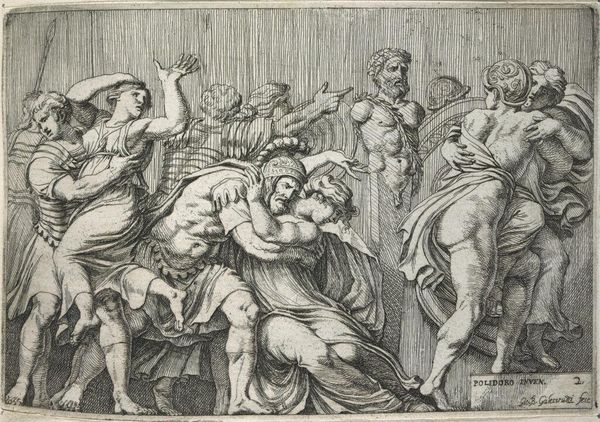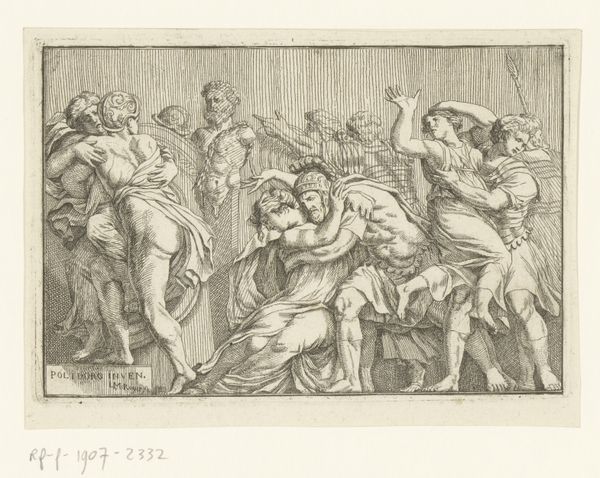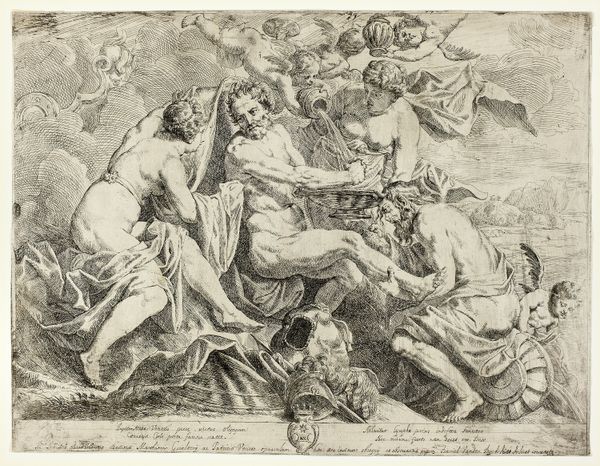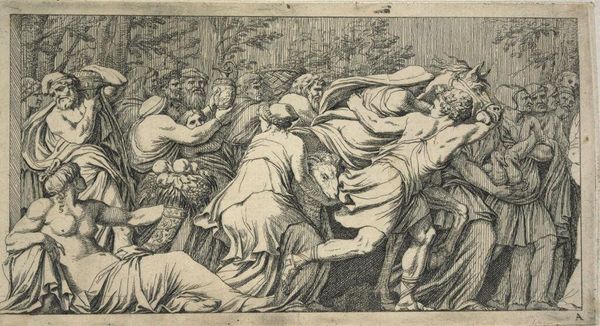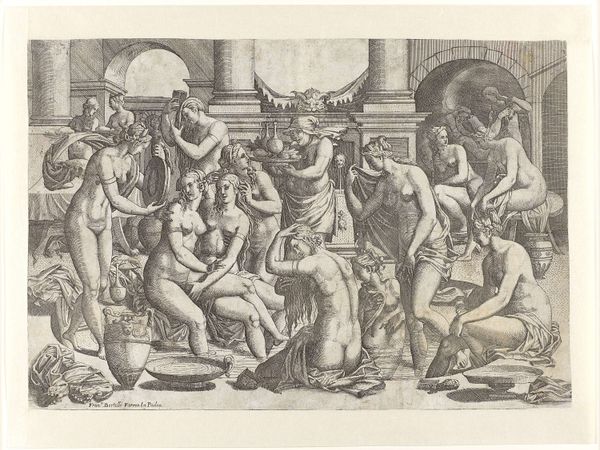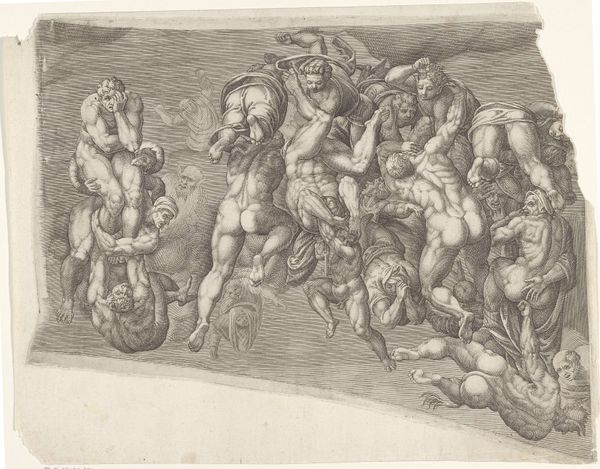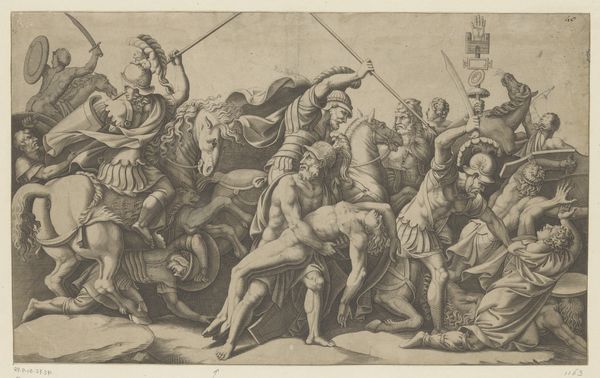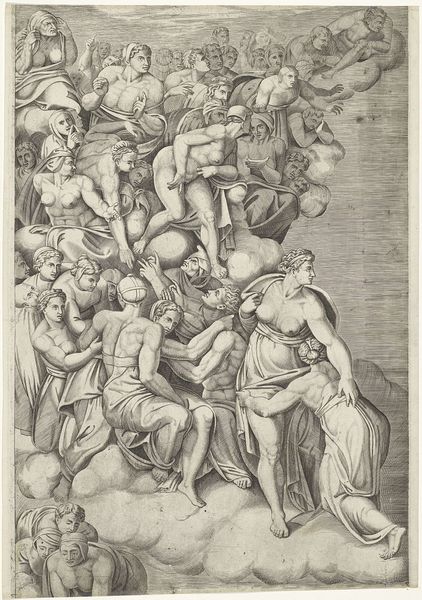
Dimensions: height 115 mm, width 170 mm
Copyright: Rijks Museum: Open Domain
Curator: We’re now looking at "The Rape of the Sabine Women," an engraving created between 1625 and 1689 by Giovanni Battista Galestruzzi. It depicts a scene of abduction, bodies intertwined and caught in dramatic action. Editor: My first impression is one of chaos, of bodies caught in motion. The stark contrast created by the engraving technique only amplifies the violent tension. There's something unsettling in this orchestration of forced entanglement. Curator: Absolutely. The subject itself, a foundational myth of Rome, has a problematic history of romanticizing violence. It becomes crucial to consider how the historical power dynamics influence the telling and the visual representation of this story. How do we reconcile this tradition within our contemporary feminist sensibilities? Editor: From a symbolic perspective, I see the repeated gesture of grasping and lifting the women speaking to a very primal assertion of dominance. The helmet, the spear – these aren't just objects; they reinforce the narrative of masculine strength overpowering feminine vulnerability, a visual language deeply rooted in societal values and carried through art history. Curator: And let’s look closely at those gazes, or the lack thereof. Notice how few of the women look directly at their captors. The figures are so intertwined; what do we say about the implied lack of agency and intersectional complexities inherent in depicting such scenes? This representation can also prompt reflections on artistic traditions portraying violence, particularly against women, and whether we should critically re-evaluate these established cultural representations. Editor: I agree. It’s about challenging, not ignoring the encoded meanings within the imagery. The symbol of a woman seized, lifted is replicated throughout art, echoing notions of ownership and conquest. But looking beyond that we see something of the original act; not some political drama but the violent imposition of patriarchy. How is this iconography continuing to shape our world today? Curator: Considering Galestruzzi was recreating this from Polidoro da Caravaggio, perhaps this work, rather than glorifying abduction, acts as a critical lens through which we re-examine inherited cultural narratives? It challenges us to deconstruct and scrutinize the patriarchal assumptions encoded in the visual arts, fostering more informed perspectives. Editor: Perhaps the dialogue lies not in passively observing the image but in how it makes us question the continuing legacy of its themes in our modern age, using the knowledge gleaned from these cultural relics as warnings rather than aspirational history.
Comments
No comments
Be the first to comment and join the conversation on the ultimate creative platform.
